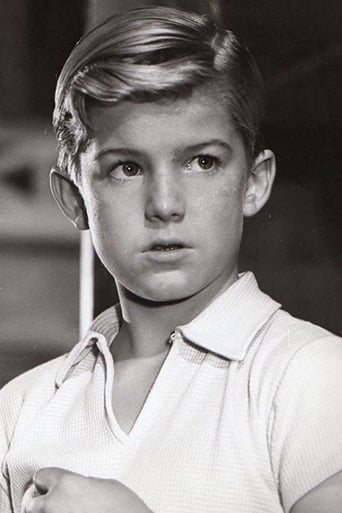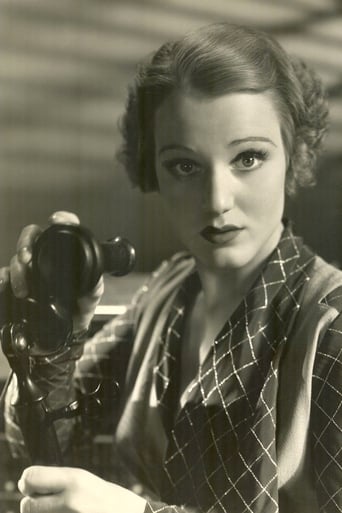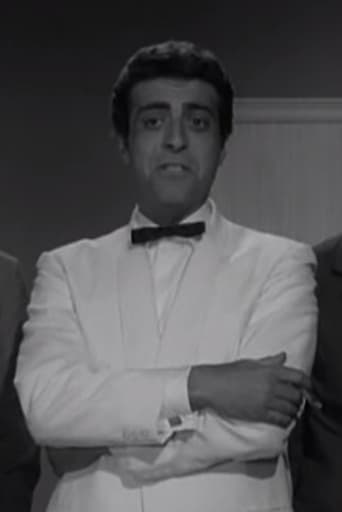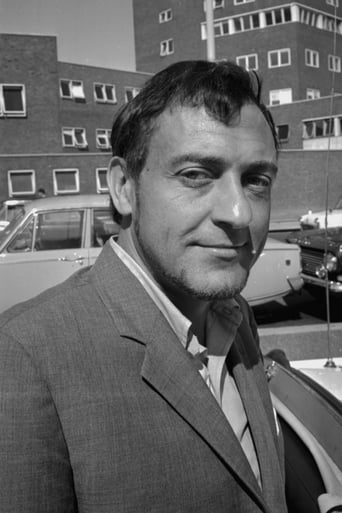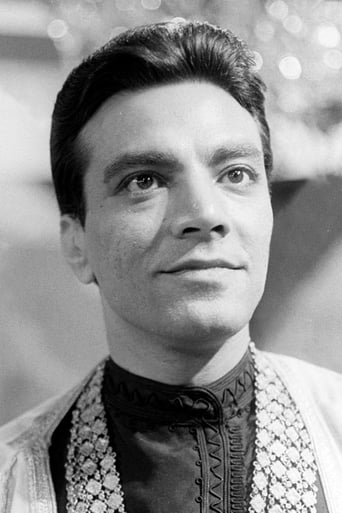Libramedi
Intense, gripping, stylish and poignant
HottWwjdIam
There is just so much movie here. For some it may be too much. But in the same secretly sarcastic way most telemarketers say the phrase, the title of this one is particularly apt.
Ortiz
Excellent and certainly provocative... If nothing else, the film is a real conversation starter.
Cristal
The movie really just wants to entertain people.
robert-temple-1
This British film, whose original title was SAMMY GOING SOUTH but was retitled as A BOY TEN FEET TALL in America, is one of the many wonderful films directed by Alexander ('Sandy') Mackendrick. I knew Sandy very well before he went to teach film making in America. He was a kind, loving and sentimental man with a great fondness for children, which explains why he made three notable films featuring children, this one, MANDY, and A HIGH WIND IN JAMAICA. This film is based on a novel by W. H. ('Bill') Canaway, who also wrote the script for THE IPCRESS FILE (1965). Shooting films like this on location is one of the riskiest things a director can do. With this film, it was shot from Egypt to South Africa, and down the entire length of the African continent. Sandy survived that danger to his career. But it was the location shooting for A HIGH WIND IN JAMAICA later on which finished his career as a feature film director. It went so greatly over budget because of the location work that Sandy was the fall guy for a major budgetary disaster. He liked to shoot a lot of takes and was a perfectionist, but that did not explain the financial loss. If the film had been a big hit and made a profit, no one would have complained. But instead, HIGH WIND was used as a pretext to save the reputations of the producers and distributor by declaring Sandy responsible and spreading the word throughout the entire film industry that he was from thence forward to be 'unbankable', that dread word which means the end of any director's career. I know all of this for an absolute fact. Most people do not know what it means for a film director to be declared 'unbankable'. It means that the guarantors (a form of insurers) of the budgets will never approve the 'unbankable' director to direct any film again, no matter how brilliant and talented he is. This was also a problem for Orson Welles, who by the way was a great friend of Sandy's. One evening at dinner at Sandy's, the table was heaped with huge mounds of grey caviar from Iran. I never saw so much caviar before or since. Sandy explained that Orson was supposed to come but cancelled at the last minute, and he had a gargantuan appetite. So I shamelessly ate a great deal of Orson's caviar, as did we all, and it was a caviar feast never to be forgotten. This film stars the boy actor Fergus McClelland, and I recommend that everyone who gets the DVD watch the extra feature which is an interview with him remembering what it was like to work with Sandy on the film. Edward G. ('Eddie') Robinson added a great deal of gravitas to the film and did a wonderful job of playing a rogue diamond prospector who takes the wandering boy in and treats him like a son. Harry Corbett plays a straight role (this was before STEPTOE AND SON). The saga of the boy's lonely journey from Port Said, where his parents have been killed by British planes in a bombing raid during the Suez Affair of 1956, all the way to his aunt's Fairview Hotel in Durban, South Africa, alone and without money, is a truly amazing one. Sandy's original final cut was about 3 hours, whereas the released version of 129 minutes only appears to survive in the 114 minute version of the DVD, the rest being lost. How I wish the director's cut still existed! The adventures are so amazing, and we would have seen more of the magnificent cinematography which features so strongly in the film. This is a film every child should see, but also every adult. It is a film the appeal of which will never die. A great emphasis is placed by Sandy on the child's perspective as he makes the 5000 mile journey. The film is not at all sentimentally done, however, but is very realistic and does not hesitate to portray the terrible tragedies that happen on the way. When the Syrian's face is hurt by an explosion in the Sudanese desert, the shots of his disfigured face were removed, probably the only loss from the director's cut which was acceptable artistically. When the boy saves Eddie Robinson's life by shooting a charging mother leopard, it seems that a real tiger may actually have been shot. (I'm not certain about that.) That was in the days before animal rights groups. Sandy was a soft-hearted man who would never knowingly mistreat an animal, but the story was the story back in those days. In any case, the leopard's cub was taken away and nurtured. This film portrays a true epic journey, of the kind which would be impossible today. Who could walk across Africa now? There are too many civil wars and massacres taking place all the time, not to mention crazed terrorists. Possibly the best thing about this film is that it is not a pile of Hollywood mush with ersatz emotions and everybody splashing out their feelings in great torrents. Everyone, including the elderly African man in tribal dress on the White Nile ferry who befriends the boy, maintains a stiff upper lip throughout. This film was made in the days when people still had self-control, something all but unknown today in our decadent, narcissistic, and over-indulgent society. I cannot reveal the ending of the film, but will merely say that it is handled with such realism and delicacy that it lends the final elements of integrity to the entire film which preceded it.
fung0
It's a great shame this film isn't better-known, especially outside the UK. It has recently (fall 2010) been re-released on DVD - at LAST. And it truly is worth seeking out.The story is equally reminiscent of Rudyard Kipling's 'Kim' and Nicholas Roeg's 'Walkabout.' A young boy, suddenly on his own, determines to rejoin his family, at the opposite end of Africa. Along the way, he meets a number of interesting characters, including Edward G. Robinson, in a small but pivotal part.The story is told without sentiment or sensationalism. Shot on location, it shows an Africa that may hardly exist any more, in which wild animals were still a greater danger than armed humans. The scenery is often breathtaking... but the focus is always on Sammy. Despite the trappings of epic adventure, this is really a very intimate film, about one boy's journey from loss to self-reliance.I'd rank Sammy Going South amongst the great children's adventure films of all time: Treasure Island (any version), Captains Courageous, The Wind and the Lion, In Search of the Castaways, and others. But it has a unique magic all its own. It gets inside the soul of a child like few other films, and perfectly captures a quintessentially British vision of childhood.See this film if you possibly can. You'll be glad you did.
bobolla2002
I showed this film ( U.S. version titled "A Boy Ten Feet Tall")at the base theater while stationed with the U.S. Navy in Asmara, Eritrea in 1973 and I thought it was one of Edward G. Robinson's finest. The basic premise of the movie, as I recall after all these years, is a boy is orphaned during an air raid in Egypt and then compelled to live with a foster parent. Having heard that he had an aunt living in South Africa he ran away from the foster parent and set out on his own to South Africa. The story tracks him through many adventures on his way and the best was when he came upon a diamond smuggler, Edward G. Robinson, who eventually befriends the boy and takes him under his wing. Of course this 'soft' gesture eventually leads to Edward G's demise and capture by authorities but he was able to instill a keen sense of responsibility and independence in the boy during their time together. The boy travels further across Africa and does eventually turn up at his Aunt's doorstep. I searched for this movie for years but no one seems to have heard of it. I think it would be a great candidate for a re-release or to come out on DVD.
michael-993
I saw this movie by myself as a young boy - and for years I thought I had dreamed the whole thing. As an adult (an psychologist) years later I realized how the movie impacted me and touched something deep in myself about how a boy who has lost everything - must make a long journey 'south' (symbolic of the unknown - unconscious - what better metaphor than traversing Africa) to find himself and the man who is living inside of him. I have looked for years for a copy - and wonder why to this day it has not been released on VHS or DVD - if anyone knows where it can be found I would LOVE to know. For those interested the book is wonderful as well - but doesn't have the 'feel' and 'power' the images in the movie left upon me.


